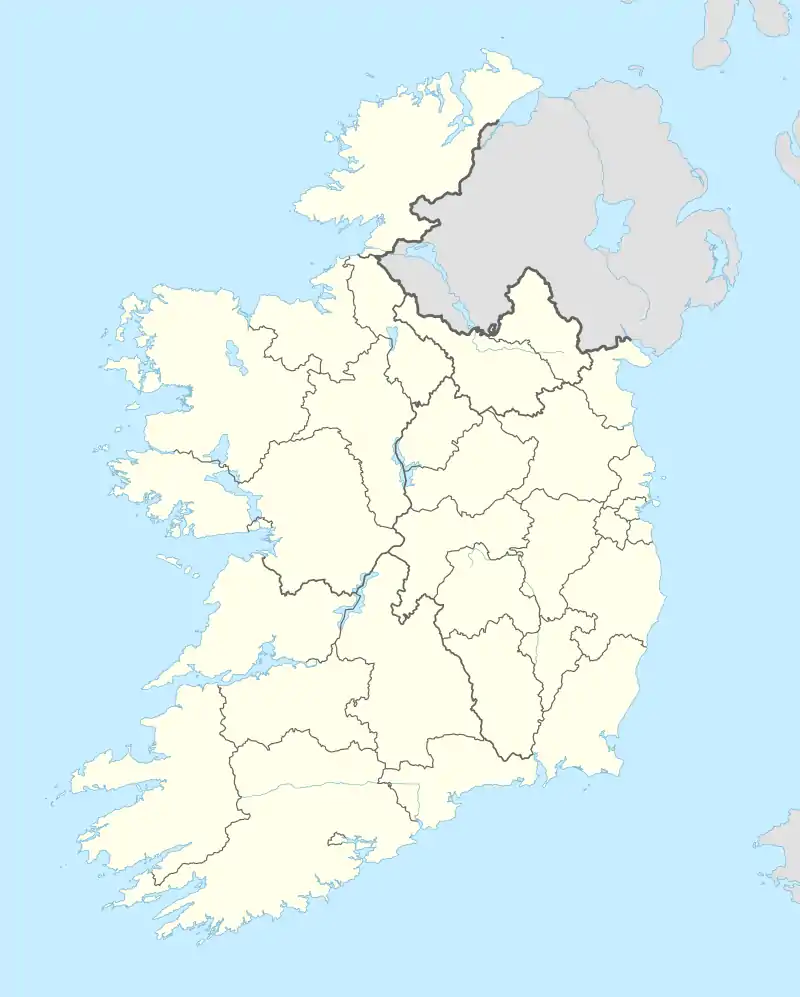Drinagh
Drinagh (Irish: Draighneach) is a village in County Cork, Ireland. It lies on the R637 road between the towns of Dunmanway and Skibbereen.
Drinagh
Draighneach | |
|---|---|
Village | |
.jpg.webp) Drinagh village | |
 Drinagh Location in Ireland | |
| Coordinates: 51°39′00″N 9°08′58″W | |
| Country | Ireland |
| Province | Munster |
| County | County Cork |
| Population (2011) | |
| • Total | 756 |
| Time zone | UTC+0 (WET) |
| • Summer (DST) | UTC-1 (IST (WEST)) |
| Irish Grid Reference | W 2049 4476 |
Drinagh is also close to Rosscarbery and Drimoleague. It has a tennis court, two churches, one primary school, two pubs, one grocery stores, a hardware store and a creamery. Curraghalickey lake is located 3 km east of the village and provides the mains water supply for the village.
Drinagh has an amateur soccer club called Drinagh Rangers A.F.C. which was founded in 1983. Drinagh play their home matches at the Canon Crowley Park, which is located on the R637 Road. The club has men's, women's and many successful underage teams. Drinagh usually play in red and black striped kits with plain black shorts and socks. The men's first team is one of the most successful teams in West Cork League history, winning multiple Premier Division titles and Beamish Cups.
According to the 2011 census, the population of Drinagh is 756, which is an increase of 9.2% from 2006.[1]
A jig named in honour of the town "The Humours of Drinagh" can be found in Matt Cranitch's book, Irish Fiddle Tunes.
In County Wexford there is also an area called Drinagh, 4 km from the town of Wexford, on the Wexford-Rosslare road, which now includes a number of industrial and commercial businesses.
Notable people from Drinagh included Sean Hurley, Sean(29) was fatally wounded on April 29th 1916 while fighting with the Four Courts garrison under Commandant Ned Daly.
Hurley was a member of a party involved in some of the heaviest fighting of the Rising, spending the week defending Church Street to the rear of the Four Courts from repeated British attacks.
On April 29th shortly before the rebels’ surrender, he received a gunshot wound to the head and arm and was taken to Fr Matthew Hall for medical hall where he was anointed before he died.
